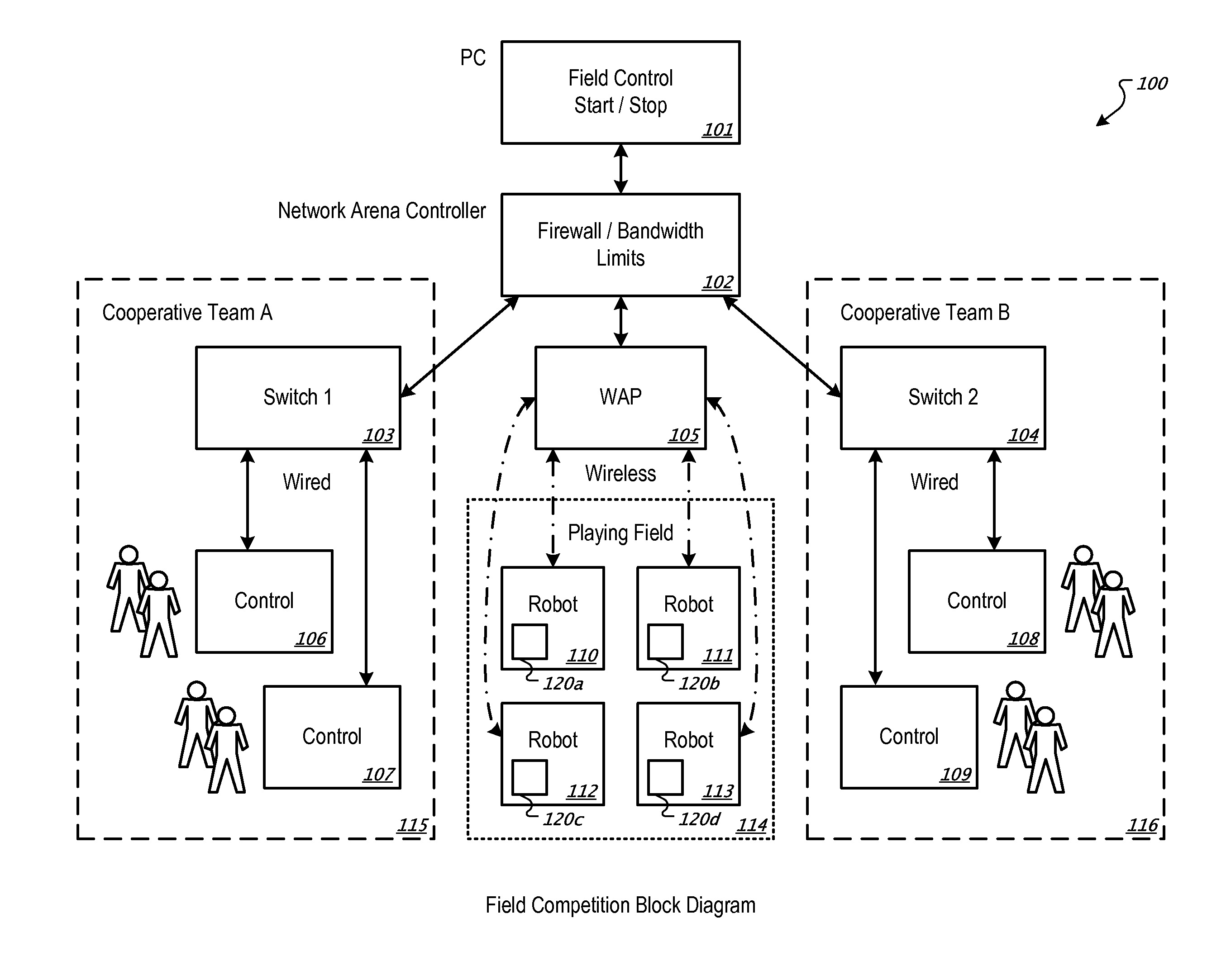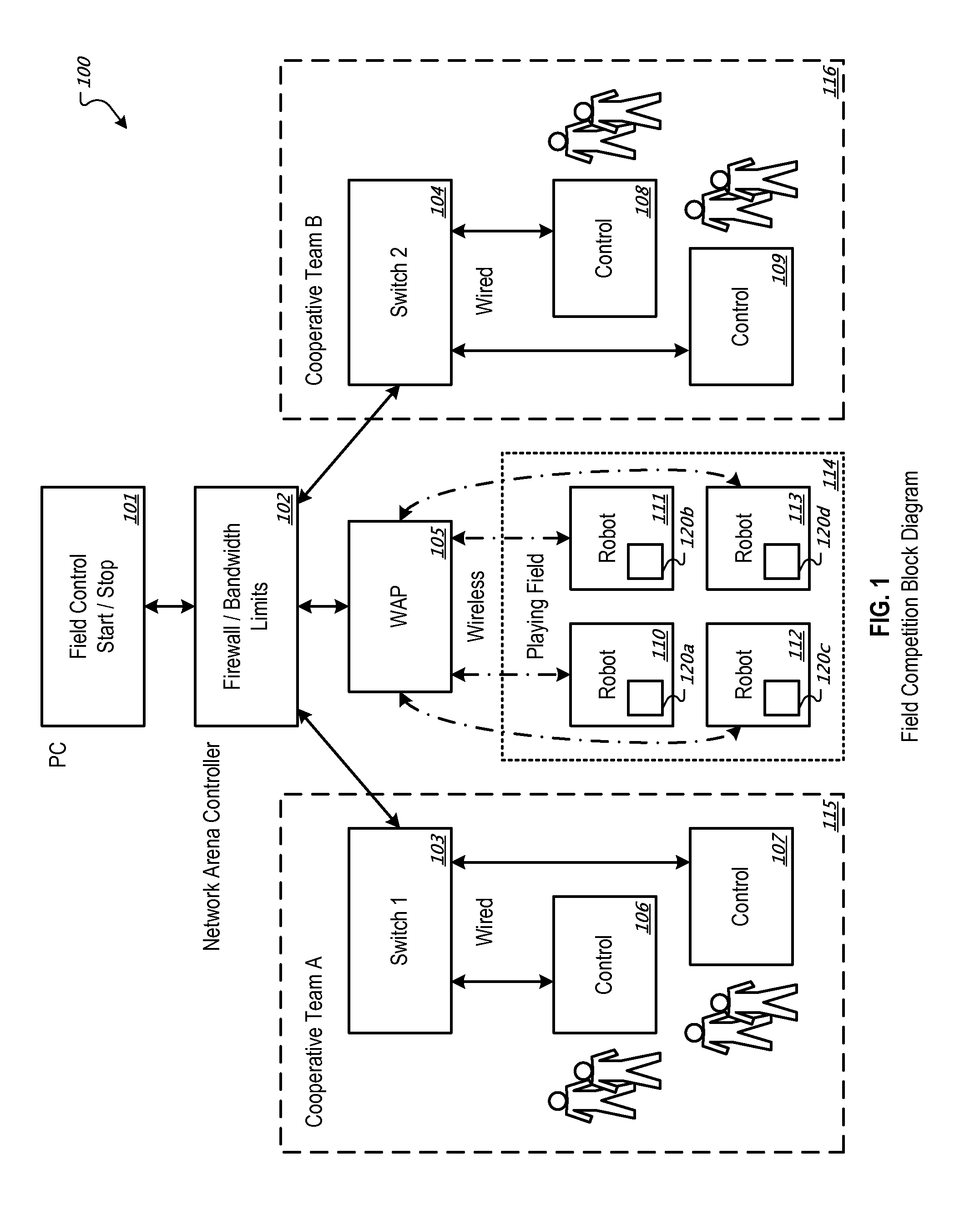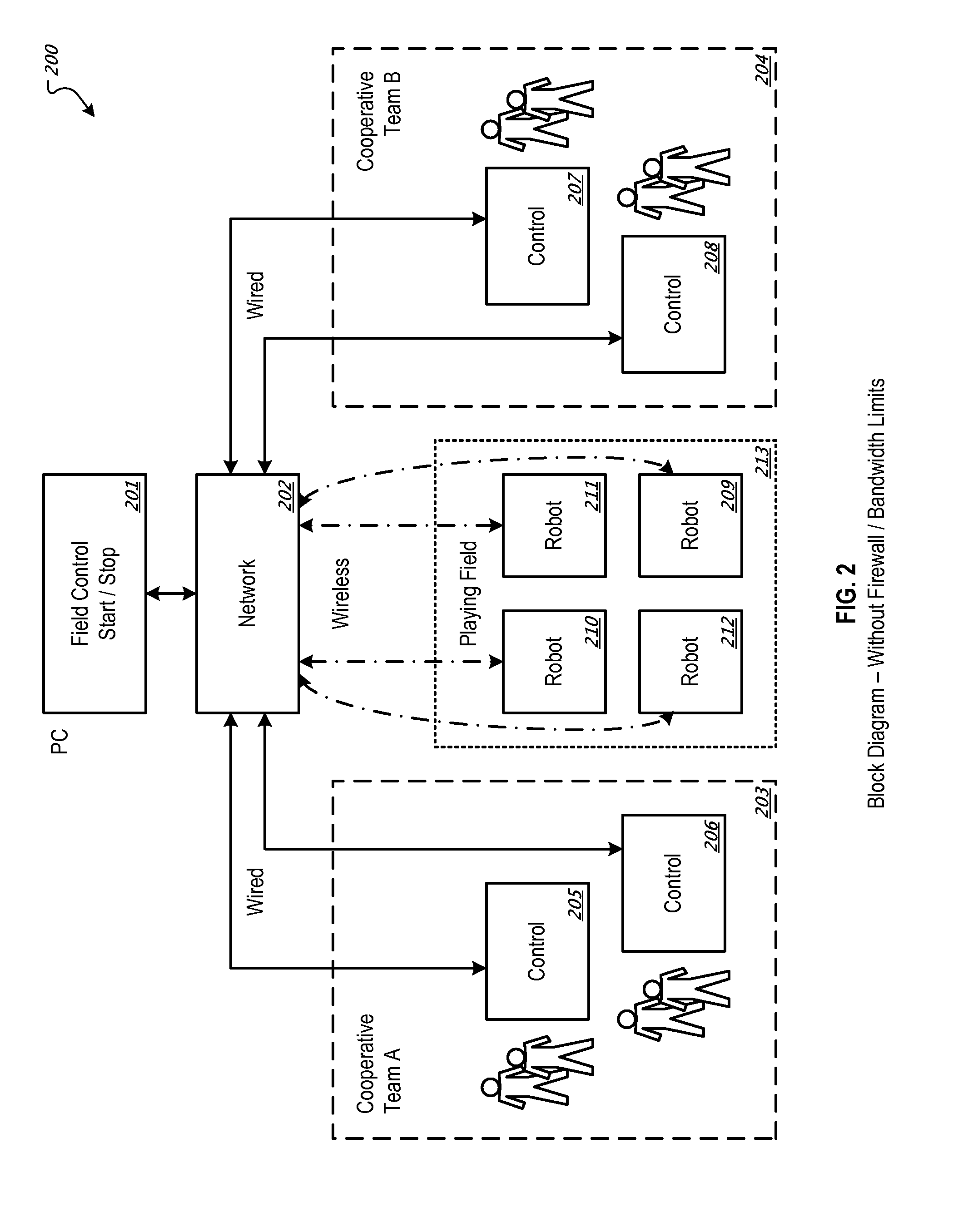Securing communications with robots
a technology for robots and communications, applied in the field of network communications, can solve the problems of contestants routinely losing control of their robots, the size, strength and capabilities of robots may in and of themselves be dangerous, and the event safety issue is exponentially increased
- Summary
- Abstract
- Description
- Claims
- Application Information
AI Technical Summary
Benefits of technology
Problems solved by technology
Method used
Image
Examples
Embodiment Construction
[0028]FIG. 1 is a block diagram illustrating an example robot competition control system 100 configured to manage communications during robot competitions. For example, the system 100 may manage network bandwidth as well as security protocols (e.g., firewall policies) between operator stations and participating robots. Security protocols may include passwords, encryption keys, firewall policies, network addresses, as well as other security elements. In some implementations, the system 100 may automatically configure participating robots with firewall policies to provide substantially secure communication sessions between operator stations and the associated robots.
[0029]At a high level, the system 100 includes a field control device 101 for controlling aspects of each round of competition (e.g., scoring, time) and a Network Arena Controller (NAC) 102 for managing communications between operator stations 106-109 and associated robots 110-113. In some examples, the NAC 102 may manage ...
PUM
 Login to View More
Login to View More Abstract
Description
Claims
Application Information
 Login to View More
Login to View More - R&D
- Intellectual Property
- Life Sciences
- Materials
- Tech Scout
- Unparalleled Data Quality
- Higher Quality Content
- 60% Fewer Hallucinations
Browse by: Latest US Patents, China's latest patents, Technical Efficacy Thesaurus, Application Domain, Technology Topic, Popular Technical Reports.
© 2025 PatSnap. All rights reserved.Legal|Privacy policy|Modern Slavery Act Transparency Statement|Sitemap|About US| Contact US: help@patsnap.com



